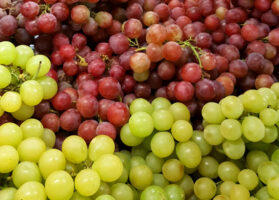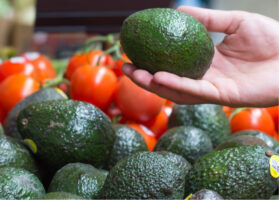Agronometrics in Charts: Peruvian Mango Season Draws To a Close With a 7.3% Growth in Exports
In this installment of the ‘Agronometrics In Charts’ series, Sarah Ilyas studies the state of the Peruvian mango season. Each week the series looks at a different horticultural commodity, focusing on a specific origin or topic visualizing the market factors that are driving change.
Earlier this year, social and political unrest was rife in Peru’s main producing regions after the president, Pedro Castillo, was ousted in December after attempting to temporarily suspend congress. “Peruvian mango has been consolidating in the international market despite the crisis we are going through,” said the executive director of SEDIR, Juan Cerna.
From the beginning of the 2022-23 campaign until the end of week 15 of this year (April 9), Peru exported 249,314 tons of fresh mangoes, registering a growth of 7.3 percent compared to the 232,275 tons shipped in the same period of the previous campaign, according to figures from the Peruvian Association of Mango Producers and Exporters (APEM). The U.S. was the second most important destination where 92,632 tons were shipped. Volumes peaked at 8.9 K tonnes in week 2 of 2023, a 6% increase compared to the peak volume of 8.4 K tonnes recorded in the 2021-22 season.

Source: USDA Market News via Agronometrics.
(Agronometrics users can view this chart with live updates here)
This season saw larger sizes, especially of the Kent variety. “Size 10’s and 12’s are a bit scarce but we have plenty of 6’s through 9’s,” said Albert Perez of Continental Fresh. Compared to last year, prices are lower this season, which Perez attributes to larger volumes coming to the US at a time of weaker demand. The season saw prices ranging from $7.25 per package in week 47 of 2022 to $4.32 per package in week 1 of 2023.

Source: USDA Market News via Agronometrics.
(Agronometrics users can view this chart with live updates here)
The Peruvian government has been actively promoting the development of the country’s agricultural sector, including the mango industry, through various initiatives and programs aimed at improving productivity, quality, and competitiveness. These efforts have helped to strengthen the country’s position as a major player in the global mango market. Climate, however, also has an immense impact on agriculture in Peru.
“We still do not know what is going to come by the end of the year with the possible arrival of the El Niño phenomenon, which will only be known from June,” stated Gabriel Amaro Alzamora, President of the Association of Agricultural Producers Guilds of Peru (AGAP),
The first vice president of AGAP, Rosario Bazán, pointed out that “El Niño Costero” is already registered in the northern zone of Peru and has been impacting the sector. Regarding a probable presence of the El Niño phenomenon at the end of this year, she said that it is high (there is a 50% probability and it would be climbing around 70%), so there would be two climatic impacts this year.
“El Niño Costero is already being recorded, this is due to the rains, high temperatures, and high relative humidity, which are having an impact on the productivity of various crops in the Peruvian agro-industry; the growth rate of the sector will probably be less than the previous years. This is being caused by lower investments due to the problems generated by legal security and political-social instability, to which the contraction due to the effects of El Niño Costero is added,” she commented.
“We have great potential. We have already become one of the main supplying countries of nutritious food for the entire planet. Latin America is the main food exporting region in the world and Peru is one of the countries that plays a very important role in Latin America. The possibilities and potential are there, what we require is socioeconomic and legal stability to be able to continue investing and doing the necessary studies and research to be able to expand this portfolio of agro-export products,” she concluded.

Source: USDA Market News via Agronometrics.
(Agronometrics users can view this chart with live updates here)
In our ‘In Charts’ series, we work to tell some of the stories that are moving the industry. Feel free to take a look at the other articles by clicking here.
All pricing for domestic US produce represents the spot market at Shipping Point (i.e. packing house/climate controlled warehouse, etc.). For imported fruit, the pricing data represents the spot market at Port of Entry.
You can keep track of the markets daily through Agronometrics, a data visualization tool built to help the industry make sense of the huge amounts of data that professionals need to access to make informed decisions. If you found the information and the charts from this article useful, feel free to visit us at www.agronometrics.com where you can easily access these same graphs, or explore the other 21 commodities we currently track.
Written by: Sarah Ilyas






